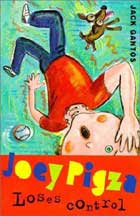What’s it about?
Will Halpin, a hefty deaf high school student attends a “mainstream” high school. When one of his fellow students, a morally bankrupt son of a casino owner, Pat Chambers, falls to his death on a field trip to the local coal mine where Halpin’s own great-uncle “Dummy” Halpin died, he and his buddy Devon Smiley solve the case.
Find out more:
Will Halpin, an expert lip-reader and amateur sleuth, whose IM handle is “Hamburger Halpin” is attending a mainstream high school after years of deaf school—and while he is finding the social lives of his fellow students intriguing and rich in irony, he wishes he wasn’t the butt of jokes, along with his new friend Devon Smiley, who is on the bottom of the social heap, so low on the food chain, that “even teachers and C-listers rip on him.” Will begins to fall for a beautiful, popular girl Leigha, who appears to be beaten by her bully boyfriend, the popular and morally bankrupt Pat Chambers. When Will’s class takes a field trip to visit the local coal mines, and Pat falls to his death, there are numerous suspects. Will and Devon team together to solve the crime, and their exploits place them in the thick of the investigation—and under suspicion.
This is one of darker, funnier books I’ve read in the past few years. Will has a self-deprecating sense of humor, and has a keen eye for the social drama in others’ lives and writes his sarcastic observations in a notebook. His humorous IM and text exchanges with Devon further add levity to this black comedy. Will’s narration is strong, and never self-pitying. The reader will find his letter to Leigha both naïve and hilarious. There are many moment in this book where I cringed and laughed at the same time. This is a timely novel, filled with pop culture and technological references, but the themes of disability, crime, corruption and friendship are timeless.
Genre: Humor, Mystery, Contemporary Realistic Fiction
Reading level: Grades 5-6
Interest level: Grades 6-12
Subjects: Crime, Deafness, Friendship, Popularity, High School
Read alikes:
Edmond’s Happyface
Schmidt’s Okay for Now
Bray’s Going Bovine
King’s Please Ignore Vera Dietz
















